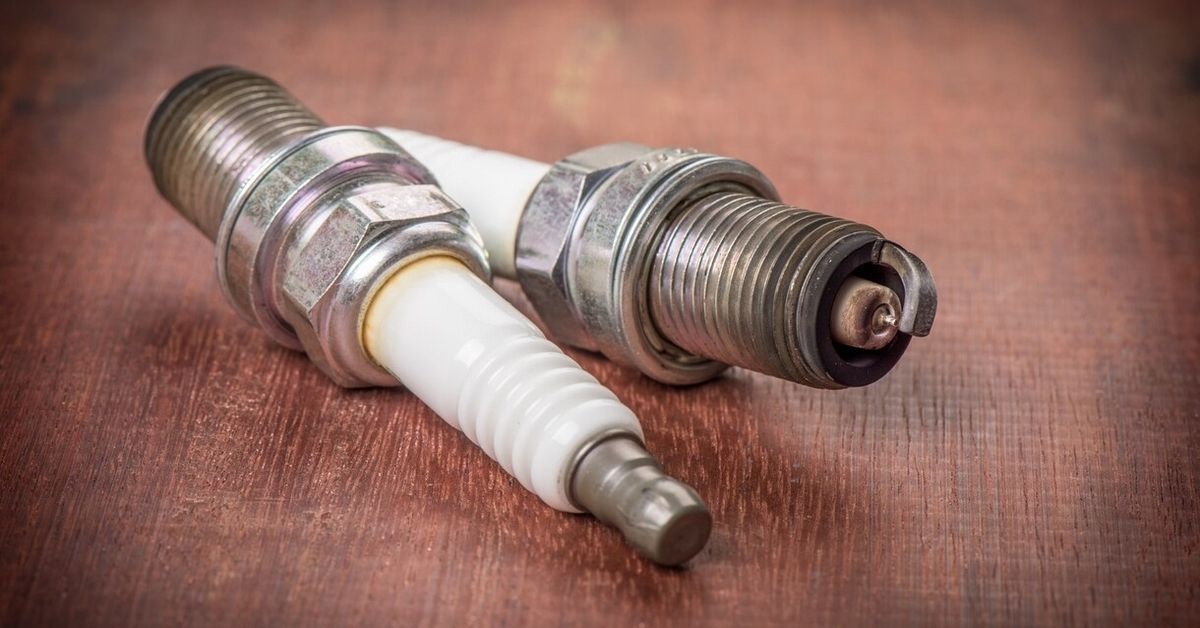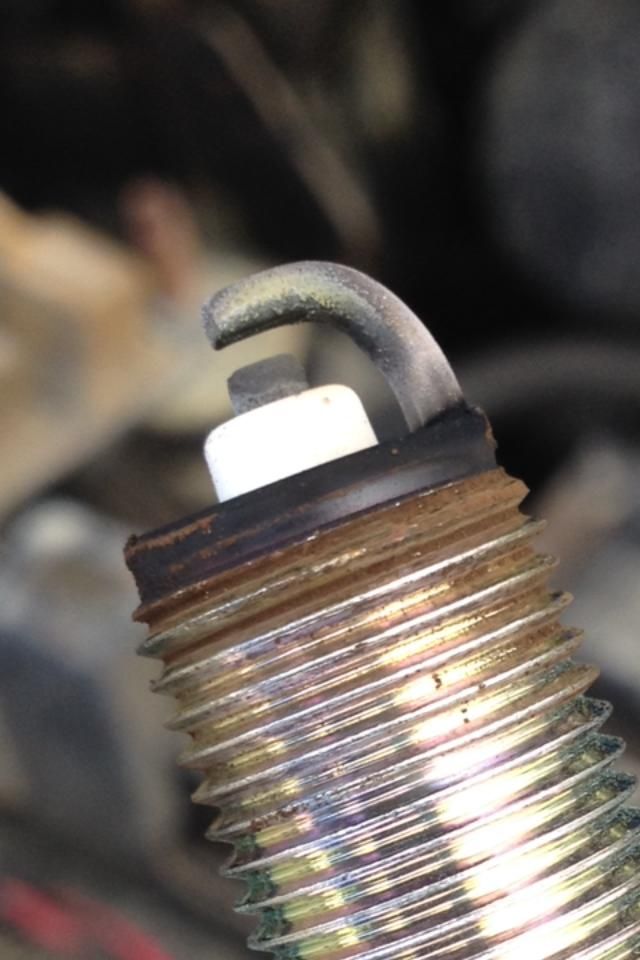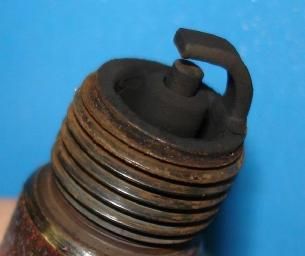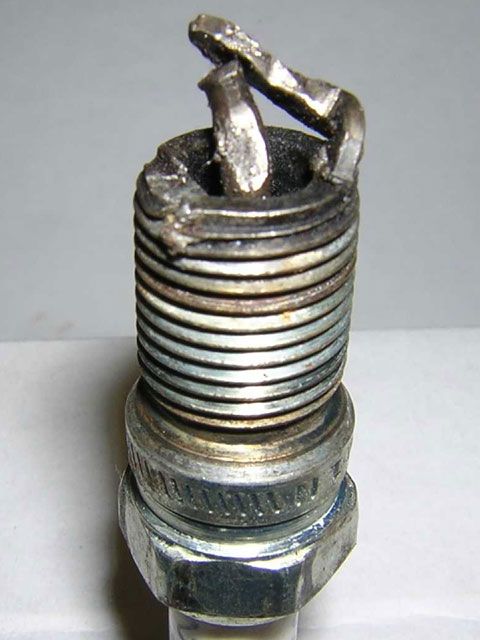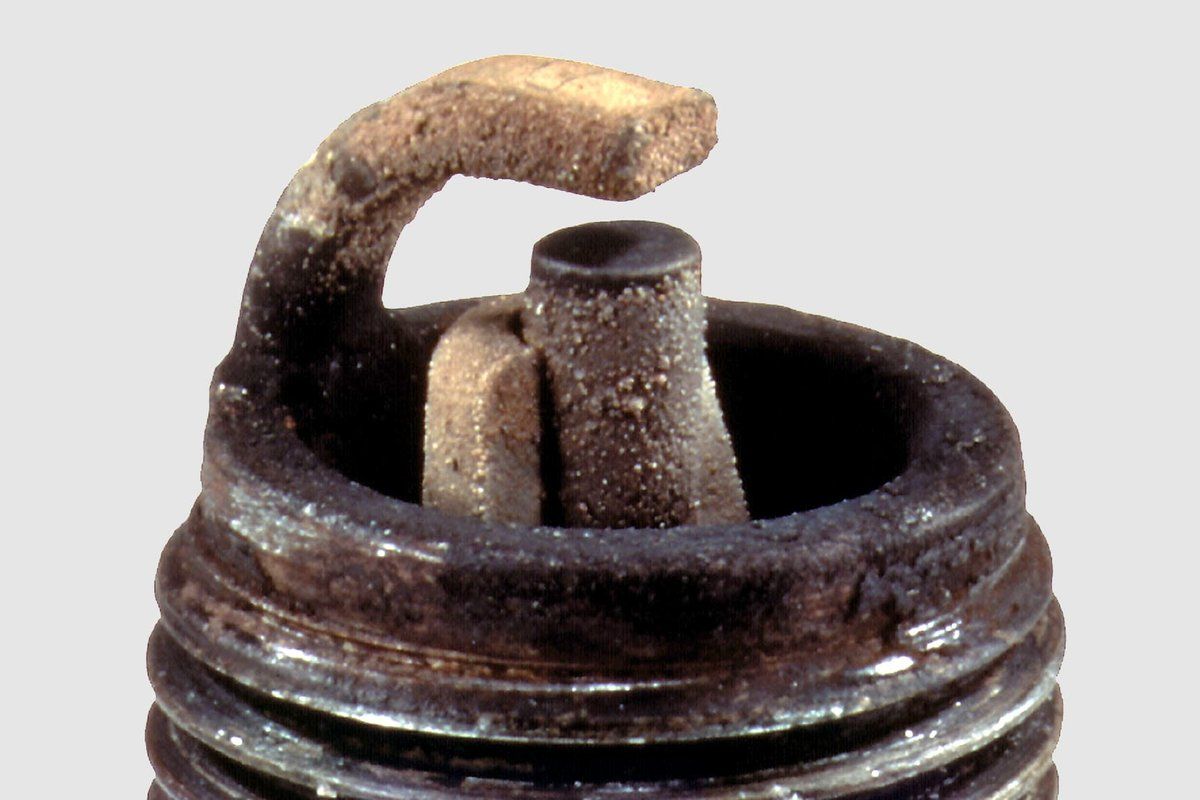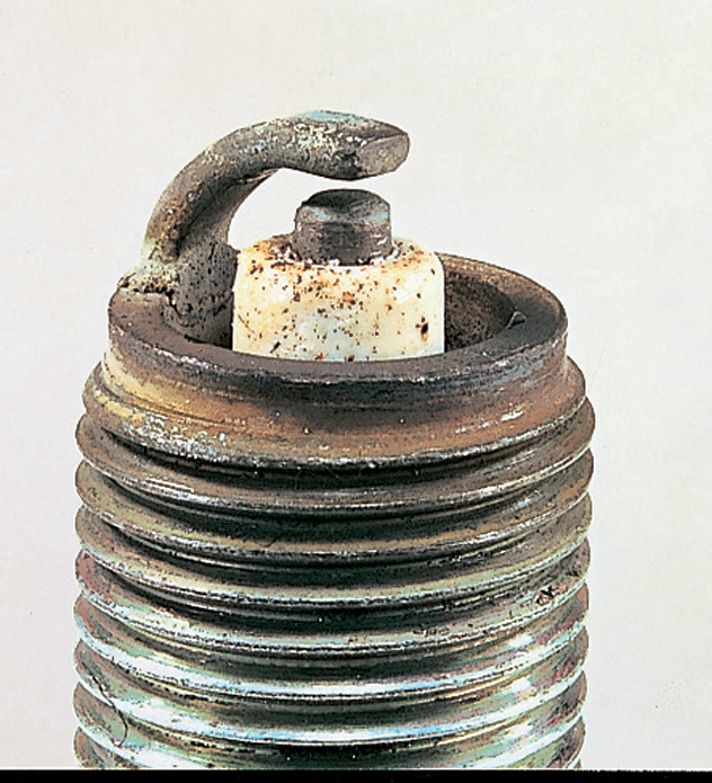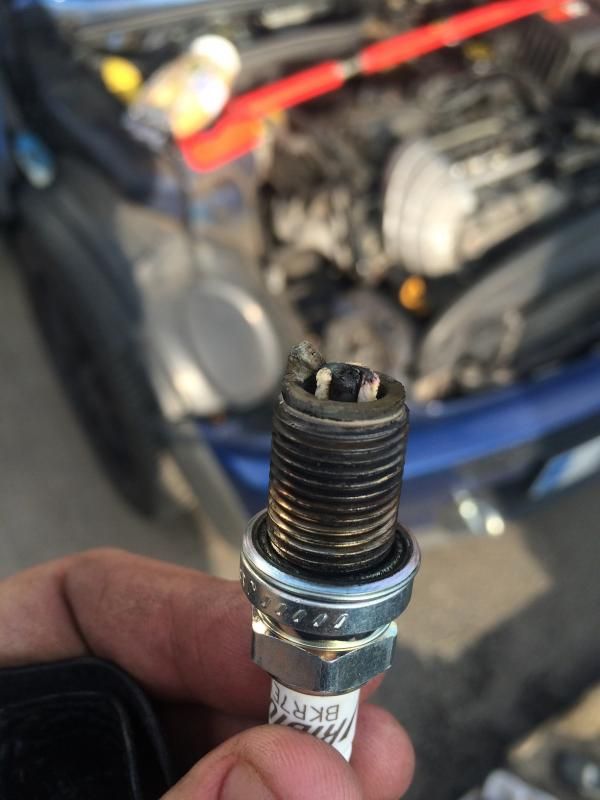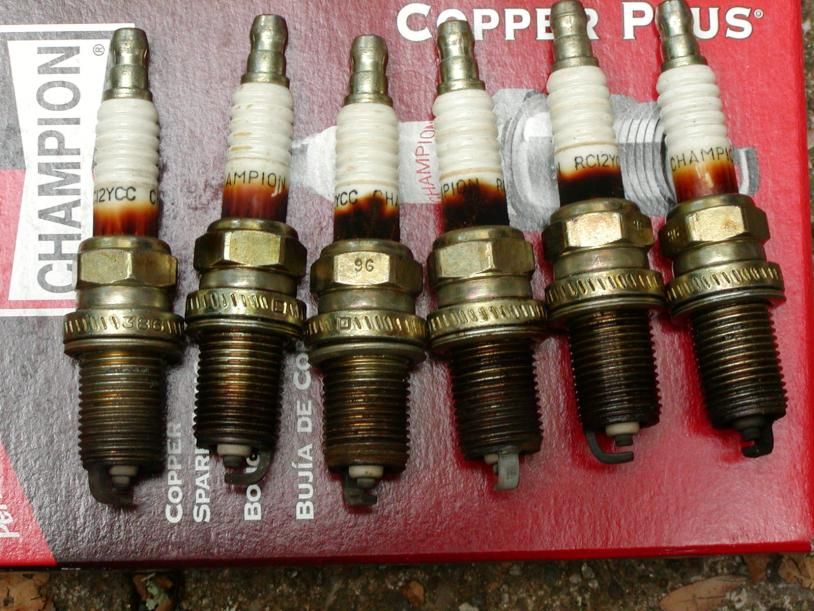Ah, the spark plug! For gasoline engines, these tiny replaceable parts have one of the most important jobs in your car: creating a spark to create combustion, and making an engine run.
Not only are spark plugs incredibly important to the process that makes engines run, but also in a diagnostic sense as well. Spark plugs are both literally and figuratively small windows into the cylinders of an engine, whatever is happening inside of your engine can be easily seen on your spark plug. NGK, Champion, and other spark plug makers have online references to what healthy spark plug wear looks like as well.
So, before you spend hundreds on diagnostic equipment, hours of your weekend in the driveway chasing engine trouble, or even more money on possible parts needed to fix your suspected engine troubles, pull out your spark plugs and see what they are telling you by reading below!
Normal Condition Spark Plugs
Before we take a look at bad spark plugs, take a look at what makes a normal spark plug work correctly. On a new spark plug, the surfaces will be clean, with a regular silver metal finish to all metal surfaces, matching the threads on the outside. The copper core and electrode are surrounded by a while insulator.
In good condition spark plugs that are used, the surface of the metal tip of the spark plug may be slightly gray or ashy in appearance, but this is normal and is just a byproduct of being a component in the combustion chamber.
Fouled Spark Plugs
A fouled spark plug is not working correctly due to being covered in a substance. If your engine is running rough, misfiring, or you smell burning oil, check your spark plugs! You might have a fouled plug.
A wet fouled spark plug is a spark plug that is wet with oil when it is pulled from the engine. Just like it looks, an oil-covered spark plug is a result of oil getting into a cylinder where it is not supposed to be. This could be as simple as oil leaking from a valve cover gasket into the spark plug well, all the way up to a blown head gasket letting oil seep into the cylinder where it gets on the spark plug.
A carbon fouled spark plug is the result of carbon buildup growing on a spark plug. These black deposits that appear due to an engine running rich with too much fuel in the combustion chamber, an engine that is running too cold, or a car that has been idling too long will have some carbon build-up. Too much, and the black carbon deposits will get in the way of the spark plug’s ability to create a spark.
Damaged Spark Plugs
While a fouled spark plug is the most common spark plug problem, the damaged spark plug is definitely a big cause for concern. A damaged plug is very obvious, with the metal electrode tip bent or destroyed in some way, making it impossible for a spark to be generated with the plug.
A damaged plug can be caused by a foreign object finding its way into the cylinder, but the damage is usually caused by a worn piston that has too far of a reach and makes contact with the spark plug when it shouldn't.
A damaged plug is rare but can be a sign that a serious engine rebuild is needed for repair.
Detonated Spark Plugs
A spark plug that has detonated is easy to distinguish from our other examples so far. A detonated plug will show signs of the white insulator cracking or splitting due to the improper flow of electricity through the plug.
Causes of a detonated plug are typically improper spark plug gapping and installation. If a spark plug does not have the proper electrode gap and is not tightened to the correct torque spec in the engine, detonation can occur.
While it is rare, a detonated plug can also be the result of a hot spark plug introduced to cold gasoline, leading to insulator breakage due to a sudden temperature change.
Thankfully, this is an issue often resolved by simply changing the detonated plug with a plug that is properly gapped and installed.
Overheated Spark Plugs
While the white insulator on a spark plug is normally clean with some minimal combustion deposits present, an overheated spark plug will show a smooth, almost glossy appearance on the insulator. Some small black speckles can be found where deposits have melted and dried on the plug. Overheated plugs will also show premature wear on the electrode tip.
Overheated plugs are typically the result of a lean fuel mixture in the engine, as well as timing that is too far advanced. Overheated plugs can be fixed with proper carburetor tuning and a timing adjustment.
Melted Spark Plugs
While melted spark plugs are rare, they are the result of the engine not transferring heat properly, and when left untreated, improper heat transfer can warp the head of your engine!
A melted spark plug looks like a spark plug where the electrode tip has melted. This can also be caused by a very lean fuel mixture in the combustion chamber, as well as improper installation, making it impossible for the plug to transfer heat throughout the combustion process properly.
A melted plug can be fixed with an adjustment of the fuel mixture on your injection system, as well as making sure your spark plugs are the correct type, gap, and that they are installed properly.
Typical Worn-Out Plugs
Remember, spark plugs, no matter how well they run, will never last forever. After around 60,000 to 100,000 miles for modern cars, spark plugs will need to be replaced. After many years and miles of use, a spark plug will start to show a rounded center electrode, along with a healthy buildup of deposits that are not unusual for the number of miles that have been driven with the plug.
Another typical mark on a spark plug would be the appearance of a corona stain around the bottom, non-firing end of the insulator. This reddish stain is the result of oil particles in the air sticking to the high-voltage insulator.
Spark plugs are often overlooked in engines, and for an engine part that is so incredibly vital to the proper use of a car, it is important to make sure you always pull your plugs at least once every 30,000 miles, or whenever your engine is acting up unusually.
With a simple examination of your spark plugs, you may just save yourself a lot of time, money, and heartache!

